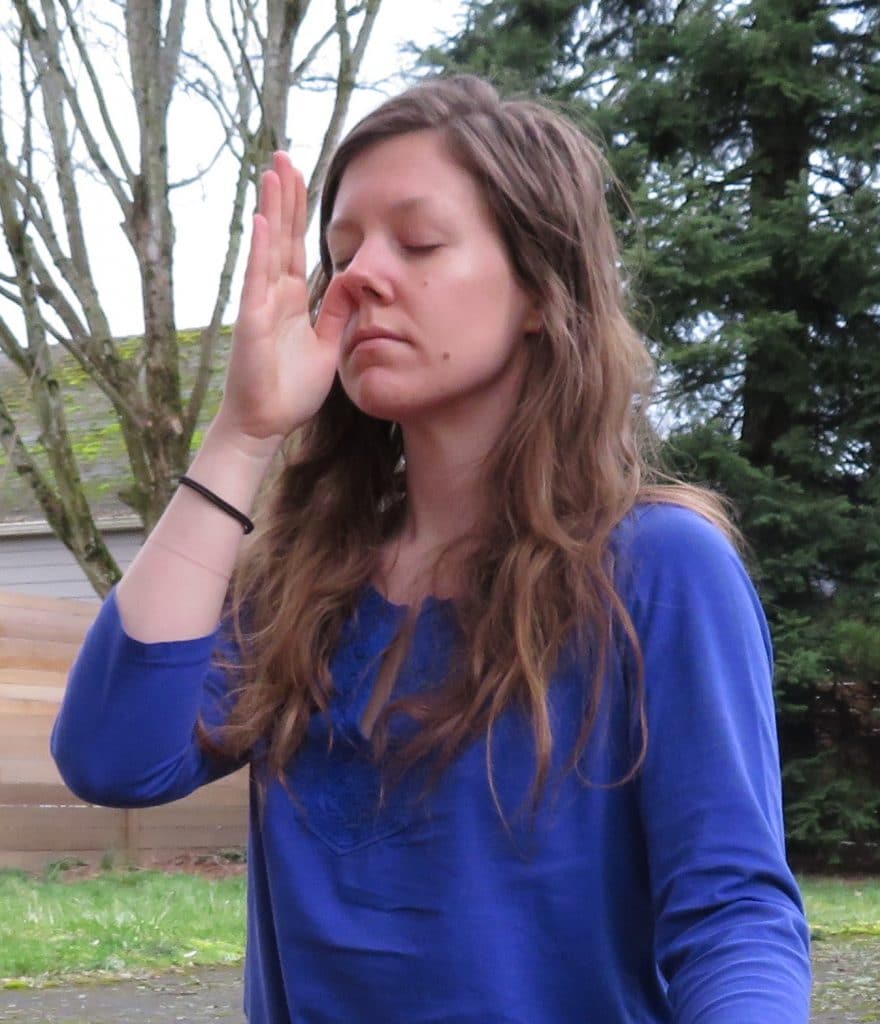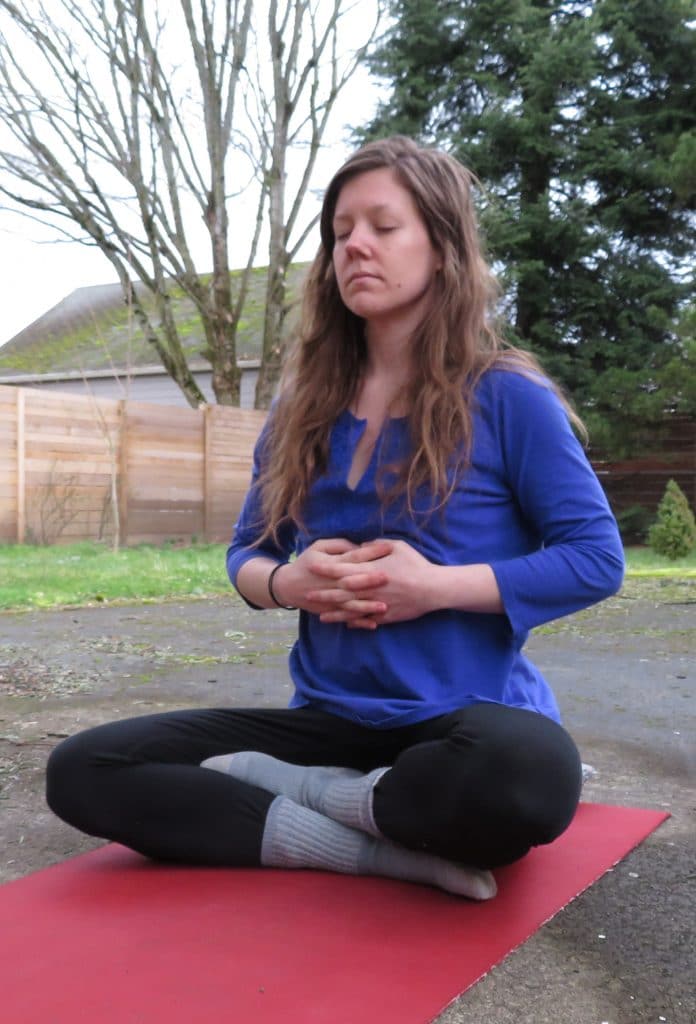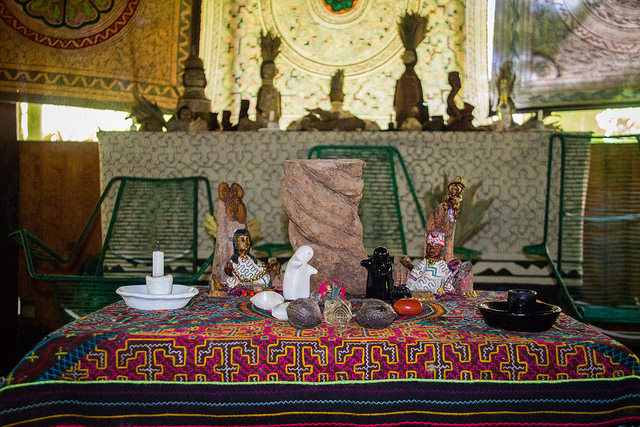
Meditation can help you deal with anxiety and integrate psychedelic experiences. Image Source: Flickr user Nikolai Kashirin.
Recently, two friends asked me which psychedelic was best for treating their anxiety—would MDMA work or was psilocybin better? What about LSD, ayahuasca, or 5-mEo-DMT? These two friends couldn’t be more different; one has a high-achieving, ambitious personality, while the other is a quiet, shy worrier. But both women suffer from chronic anxiety and have had panic attacks regularly since they were young.
I offered some thoughts on the psychedelics they asked about, which have all successfully been used to treat anxiety disorders. MDMA offers a more guaranteed positive experience, whereas you may experience some nervousness initially with psilocybin; LSD, ayahuasca, and 5-mEo-DMT provide longer or more intense experiences, which could be good or bad depending on what you’re looking for. But ultimately, I counseled that it’s not the psychedelic you choose that helps you beat anxiety. It’s how you mentally prepare yourself for a psychedelic experience, your attitude during the experience, and what you do afterward.
It’s this last part that often gets lost in the shuffle, but psychedelic integration is key to fostering long-term growth from psychedelic use. Even if you have a breakthrough with your anxiety during a psychedelic experience, chances are those old thought patterns will come creeping back if you don’t take ongoing steps to address them in sober, waking life. And this is where meditation can help.
Using Meditation to Treat Chronic Anxiety
Even if you don’t have debilitating anxiety, there’s hardly a person on this planet who’s not familiar with the cyclical, critical thought patterns known as rumination. These are the voices in our head that tell us we’re not good enough, that things are going to fall apart. Both meditation and psychedelics can help you sort through these voices and reveal the true self underneath.
In Psychedelic Healing: The Promise of Entheogens for Psychotherapy and Spiritual Development, Neal Goldsmith wrote that an ongoing spiritual practice like meditation offers the best opportunity for lasting growth after a psychedelic experience:
“Psychedelic experience is dramatic, flooding one with observations, sensations, feelings, insights, and new perspectives. This dramatic contribution of psychedelics takes time to integrate, and this is where meditation comes into play. As dreams are the fuel of psychoanalysis, so are psychedelics the fuel of meditation.”
Quieting the mind through meditation, as Goldsmith explains, helps us connect with our basic will. Anxious, racing thoughts distract us from our true intentions. Only by being still and observing yourself—which is essentially what meditation is—can you identify negative thought patterns and take the steps to correct them.
Two Meditations for Anxiety and Panic Attacks
Setting up a meditation practice at home is fairly simple. All you need is some floor space, a pillow, fifteen minutes, and some quiet. While a daily meditation practice of any kind is helpful for integrating a psychedelic experience, there are meditations found in the branch of yogic sciences called kundalini yoga that are specifically designed to break through anxious thought patterns and prevent panic attacks.
(Note: I am not a trained kundalini yoga teacher or therapist, just a practitioner sharing what has worked for me. These meditations are only mildly strenuous, but if you have any concerns about your health, check with your doctor before endeavoring either.)
Alternate Nostril Breathing
Alternate nostril breathing is one of the most common breathing 
For an even more relaxing experience, you can try a version of this exercise where you inhale solely through the left nostril, which promotes calming feelings. Then using the same hand formation, inhale through your left nostril, exhale through your right, inhale through your left, exhale through your right, and so on.
A Meditation to Prevent Panic Attacks
If you find yourself on the verge of a panic attack, try this meditation, aptly called the “meditation to prevent freaking out.” Sit in a comfortable seated position with a straight spine, either on the floor or in a chair. Interlace your fingers with right thumb on top and place 
If your mind is still racing—and if you’re using meditation to treat anxiety, chances are it is—it’s okay, don’t judge yourself. This is a struggle for every person who meditates. Instead, turn your thoughts to your body and your breath. Try to make your breath as smooth, deep, and even as possible, lingering at the top and bottom of your inhales. If thoughts keep popping up, acknowledge their presence but then let them go, I find it helpful to imagine my breath fueling a hot air balloon that lets me rise above my ruminating thoughts.
Meditation in Everyday Life
In 1982, psychiatrist Roger Walsh published his findings from interviews with five individuals who had undergone psychedelic experiences. He reported that the interview participants gained further insight and interest in “spirituality and consciousness, as well as related disciplines and practices such as meditation.” Most interestingly, those who kept a regular meditation practice experienced insight from their psychedelic experiences years after the fact. While a psychedelic experience can open your mind and heart to healing the traumas of anxiety, an ongoing spiritual practice like meditation is what opens the door to long-lasting health.
In a pinch, these meditations will calm your nerves and return you to your natural, easy state. But using them regularly can reveal deep insights about long-held negative thought patterns and provides an everyday tool you can lean on whenever needed. By being present with yourself and noticing your body, your breath, and your thoughts, you can begin to sort through the inner voices and find your true self underneath.









